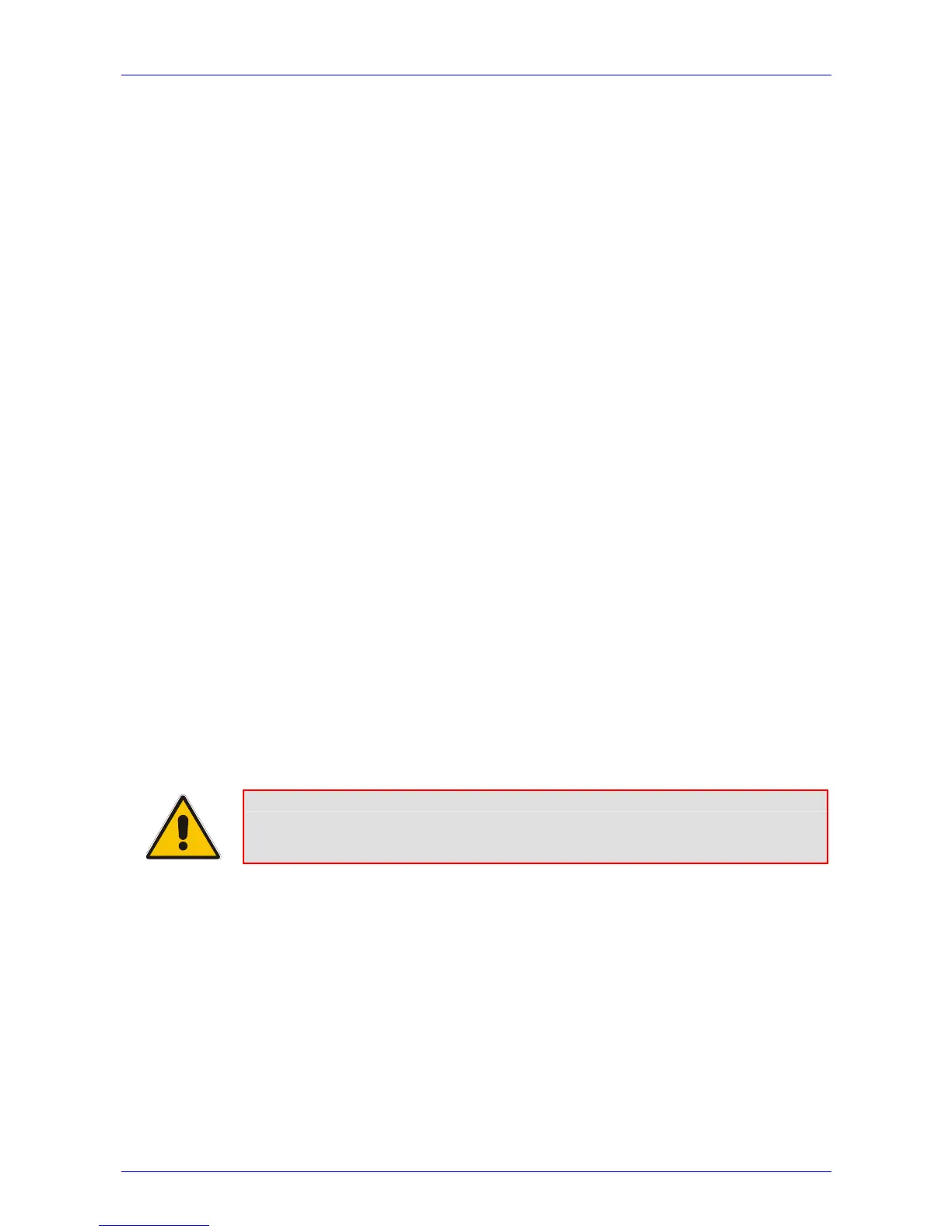MP-1xx SIP User’s Manual D. Fax & Modem Transport Modes
Version 4.4 211 March 2005
Appendix D Fax & Modem Transport Modes
D.1 Fax/Modem Settings
Users may choose to use one of the following transport methods for fax and for each modem type
(V.22/V.23/Bell/V.32/V.34):
• Fax relay demodulation / modulation
• Bypass using a high bit rate coder to pass the signal
• Transparent passing the signal in the current voice coder
When the fax relay mode is enabled, distinction between fax and modem is not immediately
possible at the beginning of a session. The channel is therefore in “Answer Tone” mode until a
distinction is determined. The packets being sent to the network at this stage are T.38-complaint
fax relay packets.
D.2 Configuring Fax Relay Mode
When faxTransportType= 1 (relay mode), then on detection of fax the channel automatically
switches from the current voice coder to answer tone mode, and then to T.38-compliant fax relay
mode.
When fax transmission has ended, the reverse switching from fax relay to voice is performed.
This mode switching automatically occurs at both the local and remote endpoints.
Users can limit the fax rate using the FaxRelayMaxRate parameter and can enable/disable ECM
fax mode using the FaxRelayECMEnable parameter.
When using T.38 mode, the User can select between two protection strategies – redundancy
packets or forward error correction (FEC). This selection is made using the
T38FaxRelayProtectionMode configuration parameter. The User can also control a special
(proprietary) redundancy mode that was specially designed to improve protection against packet
loss using the EnhancedFaxRelayRedundancyDepth parameter. Although this is a proprietary
redundancy scheme, it is compatible with other T.38 decoders. The depth of the redundancy (that
is, the number of repetitions) is defined by the FaxRelayRedundancyDepth configuration
parameter.
Note: T.38 mode currently supports only the T.38 UDP syntax.
D.3 Configuring Fax/Modem Bypass Mode
When VxxTransportType= 2 (FaxModemBypass, Vxx can be one of the following:
V32/V22/Bell/V34/Fax), then on detection of fax/modem, the channel automatically switches from
the current voice coder to a high bit-rate coder, as defined by the User, with the
FaxModemBypassCoderType configuration parameter.
During the bypass period, the coder uses the packing factor (by which a number of basic coder
frames are combined together in the outgoing WAN packet) set by the User in the
FaxModemBypassM configuration parameter. The network packets generated and received
during the bypass period are regular voice RTP packets (per the selected bypass coder) but with
a different RTP Payload type.
When fax/modem transmission ends, the reverse switching, from bypass coder to regular voice
coder, is carried out.

